Courses
CMPS 415, CSCE 515: Computer Graphics
Posted by VR Lab Team in Courses on December 16, 2009
NOTE: Yearly course info is found on Moodle under CMPS 415.
Instructor: Christoph W. Borst
Summary: These courses cover the fundamentals of computer graphics, with an emphasis on 3D polygon rendering systems. Lectures focus on concepts and mathematics of rendering, and homework focuses on 3D graphics programming. A detailed list of topics is posted outside of OLVR 342.
The video above shows ray tracers and physics simulations (particles, marbles, flocking) implemented by students. In some cases, students were allowed to use freely-available data (blender monkey, textures), but no existing ray tracing or physics tools were allowed.
Older examples:

Above: Euler angle interpolation vs. quaternion interpolation, Spring 2003.

Above: Ray tracing software by Philip Miller, Arun Indugula, Alp Asutay, and David Pope, S2003-S2004.
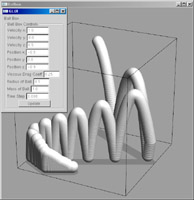
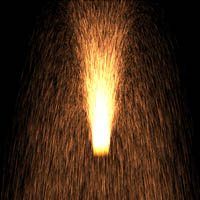
Left: Ball-in-box physics (Reed Bertrand), Fall 2003. Right: Particle system (Joshua Buller), Fall 2004.
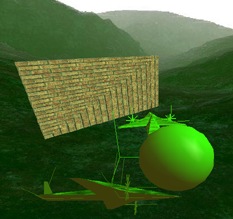
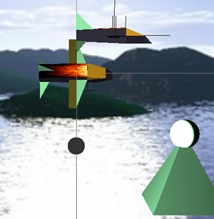
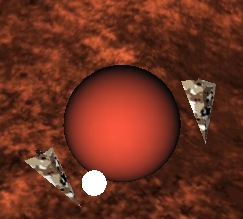
Above: Rudimentary airplane models in skyboxes (using freely available textures), flying through waypoints using Hermite interpolation, and releasing objects that fall according to simulated gravity (Vijay Baiyya, Hollie Boudreaux, Nicholas Lipari, Fall 2005).
Also see Chris Best’s video clips here and here.
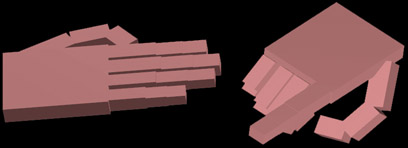
Articulated hand model assignment, Fall 2003.
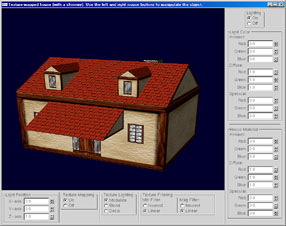
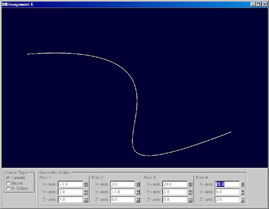
Left: Color-mapped house with interface for camera and lighting controls (using freely available textures). Right: Curve editor for Hermite, Bezier, and B-spline segments. Software by Anthony Kuczynski, Fall 2003.
CSCE 615: Virtual Reality and Visualization
Posted by Lab Administrator in Courses on December 16, 2009
Time: TBA
Instructor: Christoph W. Borst
Catalog Listing: CSCE 615-001. Virtual Reality and Visualization. (3,0,3). Visual, haptic, and audio displays, input technology and 3D interaction methods, toolkits and applications, human factors. Sp.
Prerequisite: Some past graphics or game work is helpful, but not strictly required. Check with the instructor.
Textbook: The textbooks vary by year.
In the past, we have used Virtual Reality Technology by Burdea and Coiffet, The Visualization Toolkit by Schroeder et al., and Understanding Virtual Reality by Sherman and Craig.
Assignments and Exams: Assignments include one major design/implementation project and some smaller assignments. Students are expected to contribute significantly to class discussions and give presentations on selected topics.
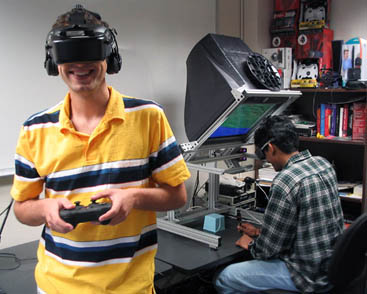
(Spring 2004) CMPS 615 students Adam Guichard and Arun Indugula in the first VR lab.

(Spring 2014) Fear-inducing environment for Oculus Rift (walking a plank above a cliff and ocean), Jonathan McRae, using some existing object models and Ogre engine.

(Spring 2014) Augmented reality maze game using Unity and Vuforia (video camera image with maze added), Oladiran Olaleye.
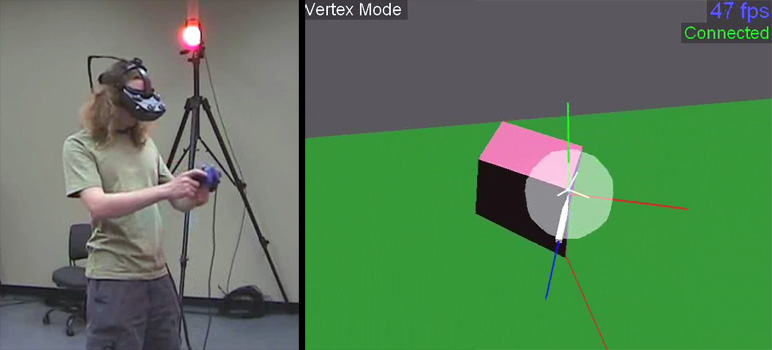
(Spring 2007) 3D Modeling Program using Vicon Mocap Lab for tracking (user is using a selection and editing tool to manipulate model vertices), Brian Kay.
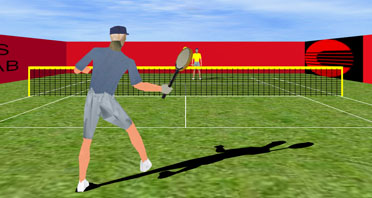
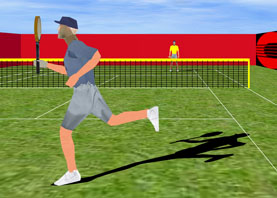
(Spring 2005) Two-player networked tennis game with one player in an HMD and one player using fishtank VR, by Alp Asutay and Arun Indugula.

(Spring 2006) VR interface with icons, file browser, image browser, and glove input; by Nicholas Ruiz.
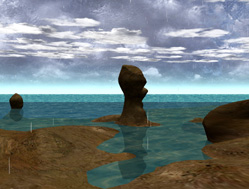
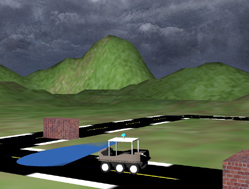
Left: Immersive outdoor environment by undergraduate student Anthony Kuczynski, with water, rain, and cloud effects.
Right: The first-version virtual environment and physical simulation for the CajunBot vehicle. Simulation by graduate student Arun P. Indugula with additional visual components and model geometry by Anthony Kuczynski. This was later extended by the CajunBot team for development and testing of their vehicle control system.
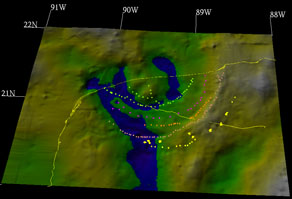
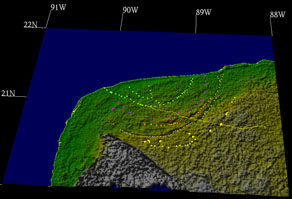
(2005-2006) Geological visualization system with contributions by Adam Guichard and Vijay Baiyya.
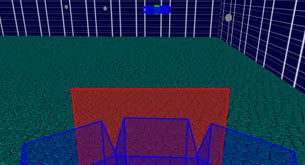
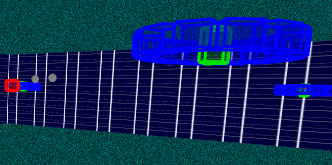
(Spring 2005) VR Warlords-type game for a head-mounted display system, by Joel Gonzales.
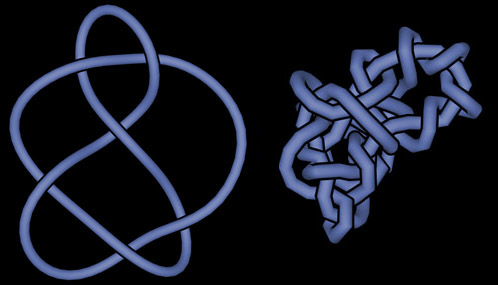
(Spring 2006) Knot Simulation with physical simulation, wand-based haptic interaction, and non-photorealistic rendering for crossing emphasis.
